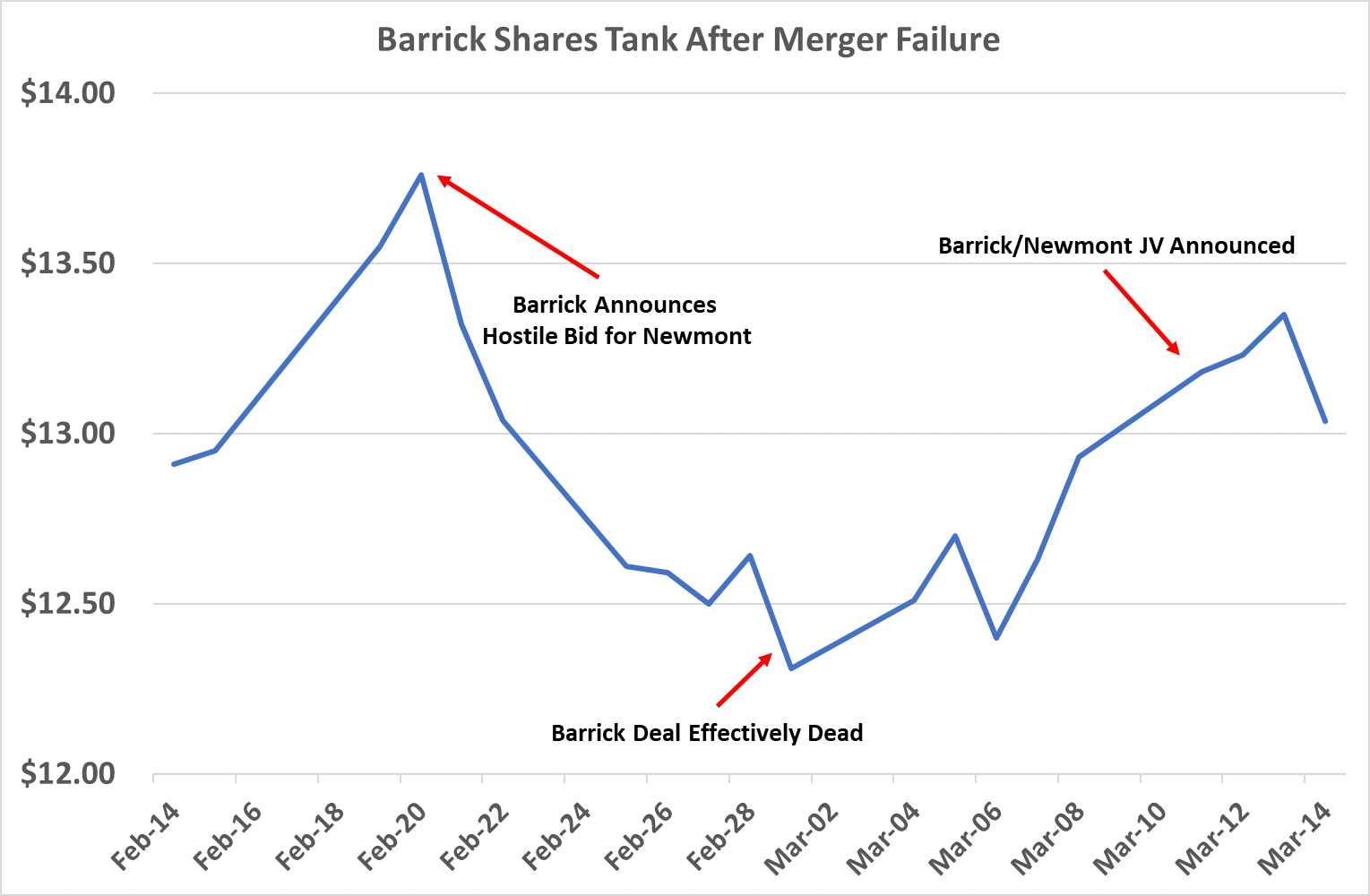The Barrick/Newmont merger did exactly what we thought it would. It died. If you avoided making that costly mistake … congratulations.
However, there is a new deal that investors will profit from … eventually.
Last week, I told you that two giant miners, Barrick Gold and Newmont Mining, had an ugly history. And in the past, when these two companies planned to combine, it ended in disaster for investors.
The deal ended in hard words and falling shares. Barrick’s share price peaked on the announcement and then fell 44%.
Lo and behold, it happened again. Barrick and Newmont will not merge … but they will combine operations in Nevada. That’s what the attempted mergers, both past and present, were all about.
Barrick Gold and Newmont Mining Agreed on a Joint Venture
On February 21, Barrick made a hostile takeover bid for Newmont. Take a look at Barrick’s recent share price chart:

Shares peaked on the announcement and collapsed on the breakup (with some hard words from both sides).
Then, on March 11, the two companies announced a Nevada deal. Shares ripped higher on the news.
As I told you last week: “Nevada produces more gold than all but three countries in the world. Most of that gold comes from mines owned by either Newmont Mining or Barrick Gold.”
The result of the failed merger is a new Nevada joint venture that looks attractive. Most of the gold produced in Nevada comes from either a Barrick or a Newmont mine. That means massive duplication of costs.
By joining forces, these companies will lower costs and save a lot of money — billions of dollars, if we can believe Barrick’s press release.
The deal is a 61.5% Barrick and 38.5% Newmont Mining split. The table below shows the assets put into the joint venture:

Don’t Buy Shares Yet
These are some of the largest contributing mines to Barrick and Newmont’s bottom line. However, both companies recognize the value they create by merging operations in the region.
The joint venture doesn’t mean I’m ready to pull the trigger and buy these companies yet.
I think there’s an opportunity to play the options, as my colleague John Ross did recently. But for long-term buyers, this isn’t the time.
There’s a lot of optimism around this new deal. That means volatility. The price goes up when these speculators are happy and falls when they are scared.
Let’s wait for them to be more afraid before we buy shares in either company.
We don’t want to own shares right now. But the day is coming. Once the excitement wears off, we will get a good price to buy in. That’s when we’ll make money on this marriage.
Good investing,

Matt Badiali
Editor, Real Wealth Strategist










